School Building
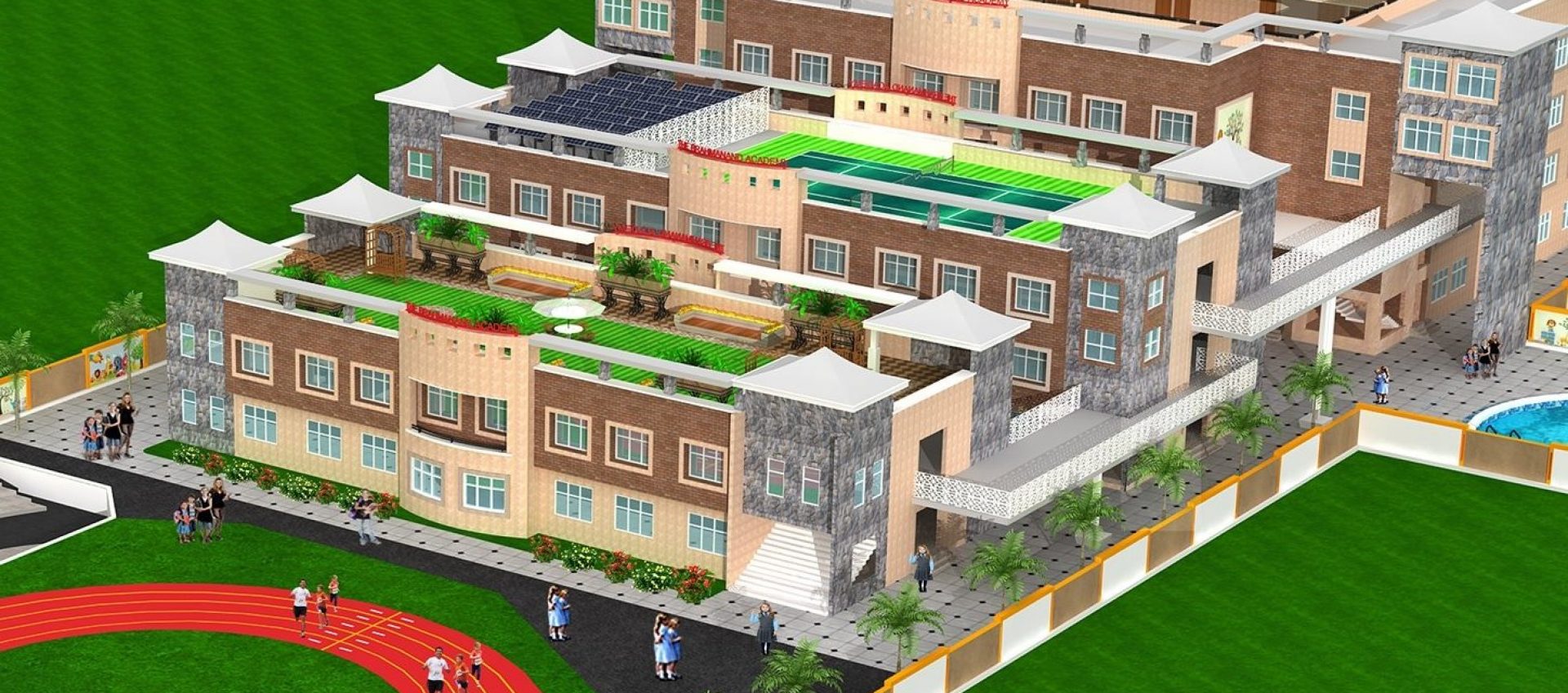
The school building of The Brahmanand Academy in Kaul, Haryana is not just a physical structure, but a cornerstone of our educational philosophy. This well-designed and modern facility serves as a crucial space for education, learning, and social development. It plays a significant role in creating an environment conducive to academic growth and providing a safe and engaging place for students, teachers, and staff. Our school building is equipped with state-of-the-art classrooms that are spacious, well-ventilated, and furnished with comfortable seating arrangements to facilitate effective learning.
- Importance of School Buildings: Our School building are the physical embodiment of educational institutions. They provide a structured and secure environment where students can learn, teachers can instruct, and the community can gather. The design, layout, and amenities of a school building greatly impact the overall learning experience and student outcomes.
- Architectural Features: Our School building come in various architectural styles, ranging from traditional to modern designs. They include classrooms, administrative offices, libraries, laboratories, auditoriums, gymnasiums, playgrounds, and other specialized areas. The layout is well-planned to promote movement, collaboration, and easy access to resources.
- Safety and Security: Ensuring the safety and security of students and staff is of utmost importance in our school building. They are equipped with fire safety measures, emergency exits, security systems, and protocols for crisis situations. Additionally, school have policies in place for visitor management, surveillance, and controlled access to protect the well-being of everyone inside.
- Learning Environment: A well-designed school building can contribute to an optimal learning environment. Classrooms should have adequate natural lighting, ventilation, and acoustics to promote concentration and comfort. Flexible spaces, such as multi-purpose rooms or breakout areas, can facilitate collaborative learning and group activities. Technology integration, such as interactive whiteboards and computer labs, enhances digital learning experiences.
- Sustainability and Environmental Considerations: Many modern school buildings incorporate sustainable design principles. Energy-efficient lighting, insulation, and heating/cooling systems help reduce environmental impact and lower operating costs. Our school even integrate renewable energy sources like solar panels. Furthermore, outdoor spaces can be designed to promote environmental awareness and provide opportunities for hands-on learning about nature and ecology.
- Maintenance and Upkeep: Regular maintenance and upkeep of school buildings are necessary to ensure their longevity and functionality. This includes routine inspections, repairs, and renovations. Proper cleaning and sanitation protocols are also vital for maintaining a healthy and hygienic environment, particularly in shared spaces such as cafeterias and restrooms.
Swachh Vidyalaya
The Government of India started the Swachh Vidyalaya campaign in 2014 to encourage good sanitation, hygiene, and hygiene practises in schools all around the nation. The initiative was launched as part of the Swachh Bharat Abhiyan (Clean India Mission), an international initiative to make India clean and free of open defecation. With the help of the Swachh Vidyalaya initiative, all schools in India will have access to clean drinking water, functional restrooms for both boys and girls, sinks for washing hands, and effective solid waste management systems. The initiative encourages students, instructors, and staff members to embrace healthy hygiene habits. The general cleanliness and sanitation of schools in India have significantly improved as a result of the Swachh Vidyalaya initiative.

The provision of Water, Sanitation and hygiene facilities in school secures a healthy school environment. Girls are particularly vulnerable to dropping out of school, particularly because of students are not continuing their education where toilets and washing facilities are not available. The Government of India has launched the Swachh Vidyalaya Initiative in collaboration with Public Sector Undertakings and Private Corporate for provision of separate toilets for Girls and Boys in all the Government Schools.
In order to maintain good sanitation and hygiene standards, The Brahmanand Academy have recently implemented measures. By ensuring that kids are taught about the value of cleanliness and hygiene, the Swachh Vidyalaya programme has also helped to the overall success of the Swachh Bharat Abhiyan. This can aid them in keeping a clean and healthy environment at home and in their communities. Overall, through encouraging excellent sanitation and hygiene habits, the Swachh Vidyalaya initiative has significantly improved the health and well-being of school-aged children in India.
Drinking Water
There is enough drinking water available for all of the school’s students. Our schools are providing acceptable drinking water facilities with Reverse Osmosis (RO) plant with 250 LPH Capacity, the water is easily available, and a sufficient number of cups must be given.
Electricity
If you are referring to how electricity is generated and used in a school, then it is important for schools to adopt sustainable and environmentally friendly practices. Schools can reduce their energy consumption by switching off lights and electrical appliances when not in use, using energy-efficient bulbs and appliances, and promoting awareness among students and staff about the importance of energy conservation. Schools can also consider installing solar panels or other renewable energy sources to reduce their dependence on non-renewable sources of energy.
Classrooms
The basic unit of a school is the classroom, which serves as the primary space where students engage in learning and development. Beyond satisfying the minimum requirements of space, fittings, and furniture, a well-designed classroom should meet both functional and environmental needs to foster an optimal learning experience. The design and setup of a classroom can vary significantly depending on the level of education and the subject being taught, but certain key elements are universally important.
Classrooms must be equipped with ergonomic furniture, including adjustable desks and chairs, to accommodate students of different ages and sizes comfortably. Adequate storage solutions for books, supplies, and personal belongings are essential to keep the space organized and clutter-free. Interactive whiteboards, projectors, and sound systems should be installed to facilitate various teaching methods, from traditional lectures to interactive multimedia presentations.

Desks and chairs:
The classroom will typically be furnished with desks and chairs for the students to sit in. Depending on the level of education, the desks may be arranged in rows, groups, or circles.
Blackboard/whiteboard:
The blackboard or whiteboard is an essential tool for teaching and learning. Teachers use it to write notes, draw diagrams, and illustrate concepts for the students.
Textbooks and materials:
Students will typically be provided with textbooks and other reference materials that they can use to study and complete assignments. Teachers may also use these materials to develop lesson plans and assignments
Digital Classrooms
Digital Classrooms have been creating a revolution in the educational sector. Embedded with modern day technologies, such interactive classrooms offer a friendly environment to the students where they may clear all their concepts while having endless fun. Benefits of digital classrooms are a lot more than one can ever think of. They are ideal for educating the little angels about the most basic rules of learning and also help them in retaining their knowledge. They have not only changed the perspective of students towards studying but have also helped the teachers in preparing dynamic multi-media lessons which can be interesting for students. Learning is more of a fun and less of a burden with the introduction of such digital classrooms in education.
fire extinguisher
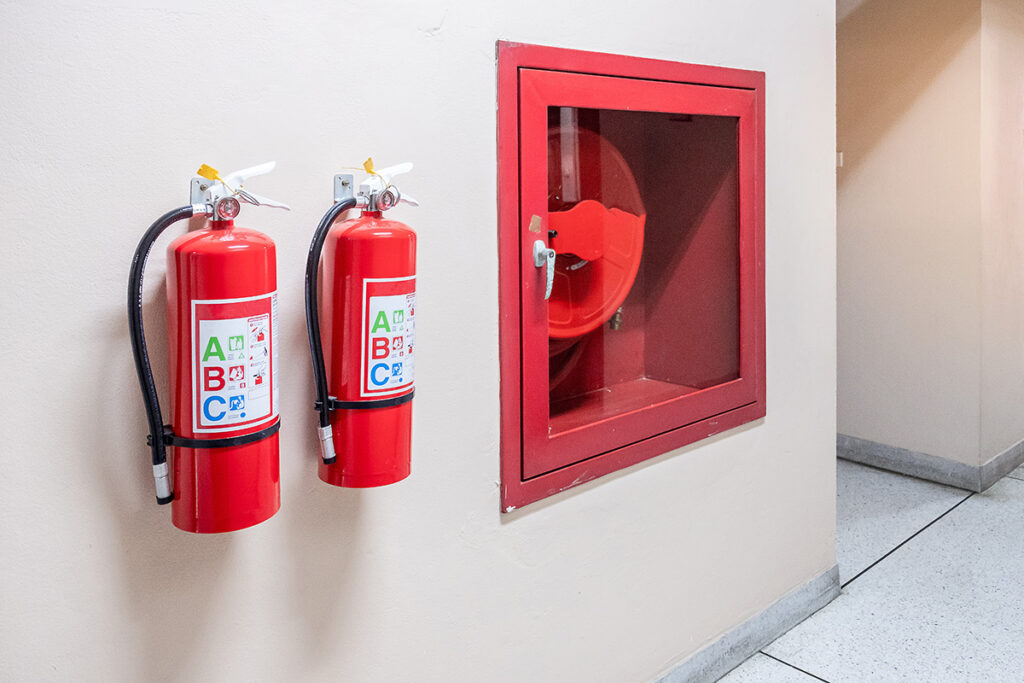
fire safety are important to prevent fires from occurring and to minimize damage and loss of life in the event of a fire. Here are some basic precautions that you can take to reduce the risk of fire. Smoke detectors are important in alerting people of a fire. Make sure to install them in all rooms, especially in bedrooms and the kitchen. Fire extinguishers are useful in putting out small fires before they get out of control. Make sure to have at least one fire extinguisher in your home, and know how to use it. Keep flammable materials away from heat sources: Flammable materials like paper, clothing, and curtains should be kept away from heat sources like stoves, heaters, and candles.
Labs
Particularly in the subjects of science, technology, engineering, and mathematics (STEM), laboratories are essential to the educational system. The significance of labs in educational settings may be summed up as follows:
- Labs give students the chance to learn via doing, which is a more effective method of learning than reading textbooks or viewing films. Students can develop a deeper grasp of ideas and theories by conducting experiments and evaluating data in labs, which can help them apply their knowledge in practical settings.
- Developing scientific skills: Labs assist students in honing their analytical, problem-solving, and critical thinking abilities. Students also learn how to gather and evaluate data, use scientific techniques and equipment, and come to conclusions based on the facts.
- These abilities are necessary for both making wise judgements in daily life and pursuing a job in the STEM disciplines.
- Engagement and motivation: By making the material more fascinating and relevant, laboratories may inspire and enthuse students to study. Students are more likely to be motivated and invested in the subject matter when they can apply concepts and theories in the actual world.
- Career preparation: By giving students hands-on experience and practical skills, laboratories may also help students become ready for careers in STEM subjects. Students can get the information and skills necessary to seek higher education or to enter the profession by working in laboratories, where they can learn about the most recent innovations and technology in their area of interest.
In general, laboratories are important in schools because they provide students the chance to engage in practical learning, hone their scientific abilities, and become ready for employment in STEM disciplines. Also, they support learning that is more engaging and pertinent, which helps encourage and involve students in their academic pursuits.
We have five types of separate modern laboratory for each section:
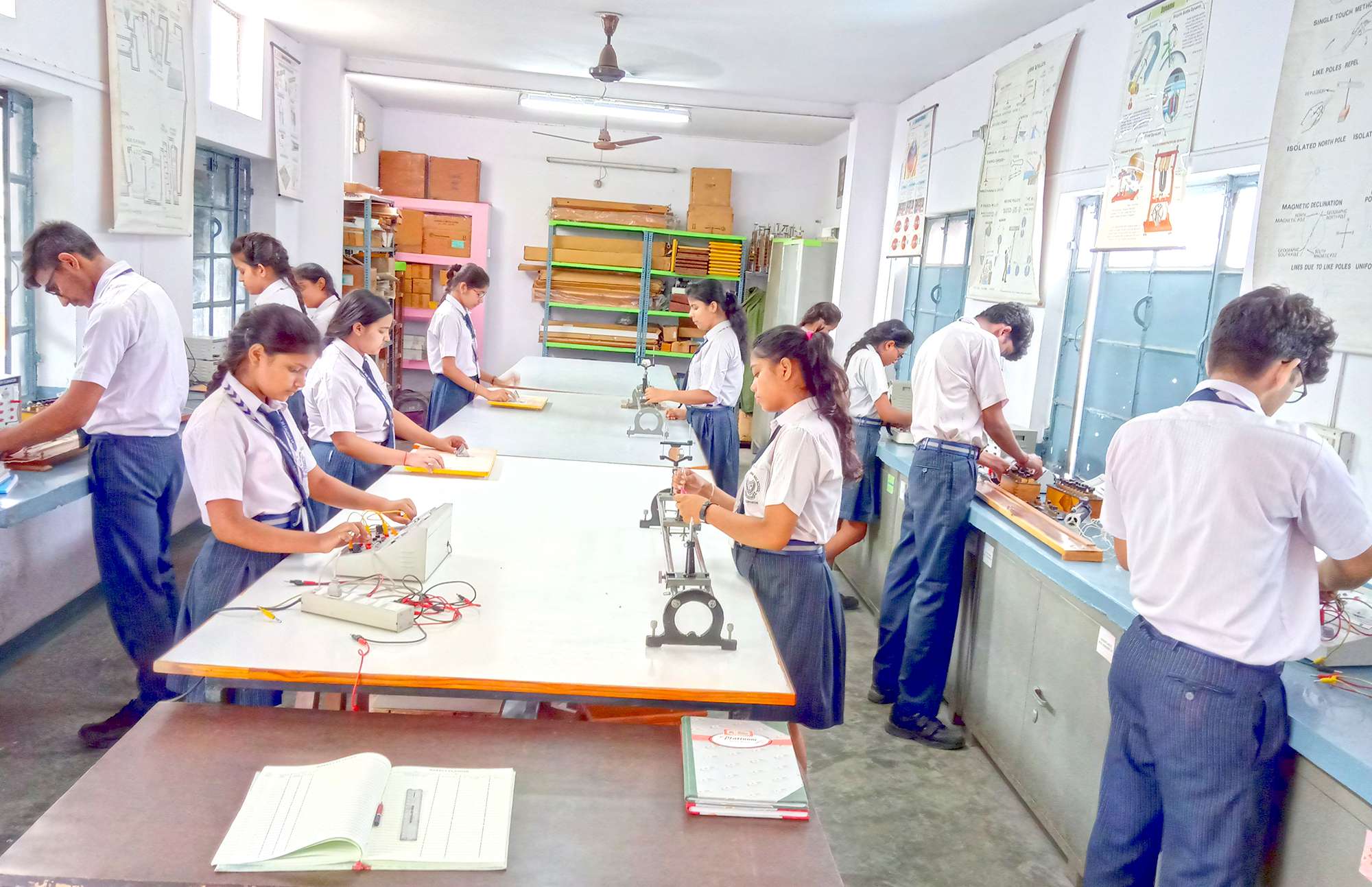
Physics Lab
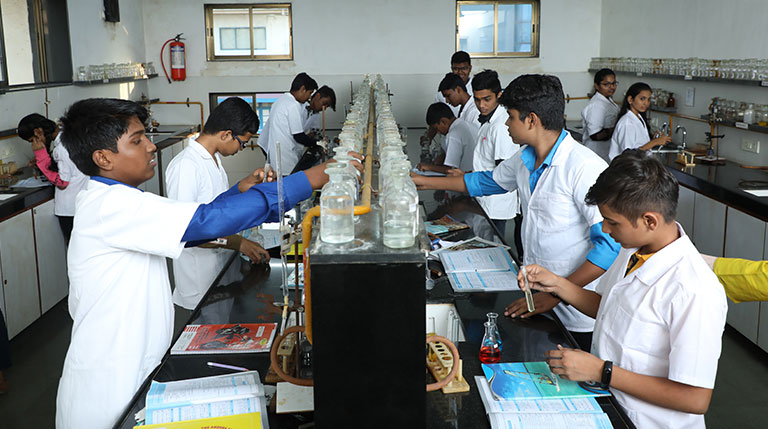
Chemistry Lab
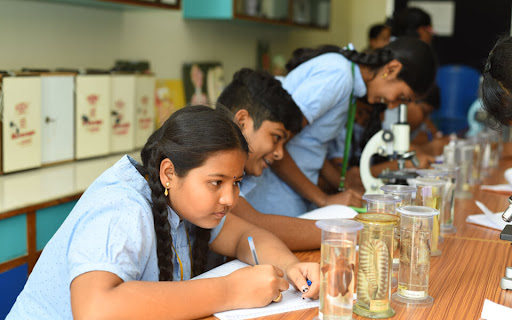
Biology Lab
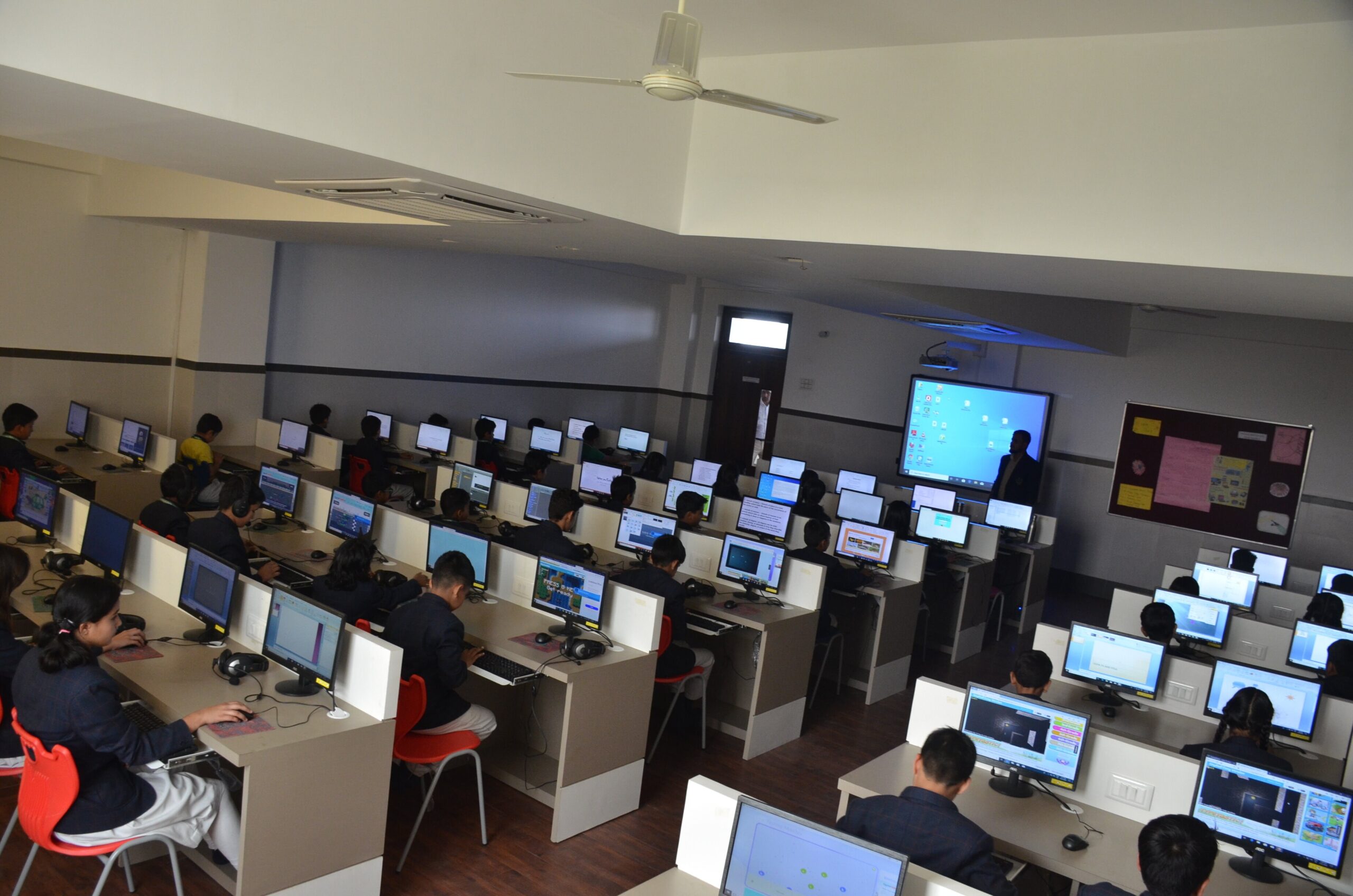
Computer Lab

